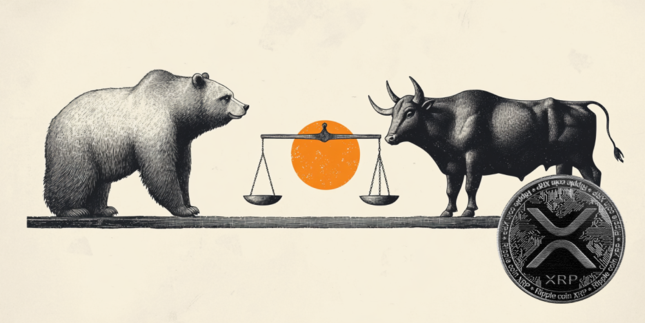- The US House Committee on Financial Services suggested banning algorithmic stablecoins for two years, citing the TerraUSD collapse.
- Issuance or creation of new “endogenously collateralized stablecoins” would also be prohibited should the bill pass.
- The ban on algorithmic stablecoins could impact the few existing coins such as DAI and Frax, pushing this category out of competition from the market.
The Terra ecosystem collapse was the harbinger of one of the worst crashes in the history of crypto. The market has still not been able to recover completely from this drawdown, and the struggle is still evident in the overall market cap’s attempt at rising above $1 trillion.
To prevent another such occurrence, the US The House of Representatives Financial Services Committee (FSC) has come up with a bill that could place stringent regulations on a certain kind of stablecoin.
Terra induces new stablecoin regulation
Since the collapse and subsequent market crash were triggered by Terra’s algorithmic stablecoin TerraUSD’s (UST) de-pegging, financial regulators seem to have grown concerned about the stability of these assets.
Focusing on algorithmic stablecoins, the US House FSC proposed a bill to regulate these stablecoins to the extent of placing a two-year ban on similar assets.
The ban would also extend to any similar upcoming assets making it illegal to issue or create any “endogenously collateralized stablecoins”. In addition to the ban, the new bill would also allow banks and nonbanks to issue stablecoins.
This would be done with the approval from regulators such as the OCC (Office of the Comptroller of the Currency) for the former and establishing a process for the latter.
This bill would, however, require a study from the Treasury in consultation with the Federal Reserve, OCC, Federal Deposit Insurance Corporation (FDIC), as well as the Securities and Exchange Commission (SEC).
The impact on algorithmic stablecoins
As it is, such kinds of assets have a minimal market share. DAI, for example, despite being the fourth biggest stablecoin in the market, only has a circulation of $6.87 billion.
Although the collapse of UST did not bear any harmful impact on the likes of DAI, USDD, Frax, etc., the new draft legislation could.
Furthermore, a two-year ban could completely push this category out of the competition in the market, leaving stablecoins to fiat-backed, commodity-backed and crypto-backed assets.
Information on these pages contains forward-looking statements that involve risks and uncertainties. Markets and instruments profiled on this page are for informational purposes only and should not in any way come across as a recommendation to buy or sell in these assets. You should do your own thorough research before making any investment decisions. FXStreet does not in any way guarantee that this information is free from mistakes, errors, or material misstatements. It also does not guarantee that this information is of a timely nature. Investing in Open Markets involves a great deal of risk, including the loss of all or a portion of your investment, as well as emotional distress. All risks, losses and costs associated with investing, including total loss of principal, are your responsibility. The views and opinions expressed in this article are those of the authors and do not necessarily reflect the official policy or position of FXStreet nor its advertisers. The author will not be held responsible for information that is found at the end of links posted on this page.
If not otherwise explicitly mentioned in the body of the article, at the time of writing, the author has no position in any stock mentioned in this article and no business relationship with any company mentioned. The author has not received compensation for writing this article, other than from FXStreet.
FXStreet and the author do not provide personalized recommendations. The author makes no representations as to the accuracy, completeness, or suitability of this information. FXStreet and the author will not be liable for any errors, omissions or any losses, injuries or damages arising from this information and its display or use. Errors and omissions excepted.
The author and FXStreet are not registered investment advisors and nothing in this article is intended to be investment advice.
Recommended Content
Editors’ Picks

Shiba Inu eyes positive returns in April as SHIB price inches towards $0.000015
Shiba Inu's on-chain metrics reveal robust adoption, as addresses with balances surge to 1.4 million. Shiba Inu's returns stand at a solid 14.4% so far in April, poised to snap a three-month bearish trend from earlier this year.

AI tokens TAO, FET, AI16Z surge despite NVIDIA excluding crypto-related projects from its Inception program
AI tokens, including Bittensor and Artificial Superintelligence Alliance, climbed this week, with ai16z still extending gains at the time of writing on Friday. The uptick in prices of AI tokens reflects a broader bullish sentiment across the cryptocurrency market.

Bitcoin Weekly Forecast: BTC consolidates after posting over 10% weekly surge
Bitcoin price is consolidating around $94,000 at the time of writing on Friday, holding onto the recent 10% increase seen earlier this week. This week’s rally was supported by strong institutional demand, as US spot ETFs recorded a total inflow of $2.68 billion until Thursday.

XRP price could renew 25% breakout bid on surging institutional and retail adoption
Ripple price consolidates, trading at $2.18 at the time of writing on Friday, following mid-week gains to $2.30. The rejection from this weekly high led to the price of XRP dropping to the previous day’s low at $2.11, followed by a minor reversal.

Bitcoin Weekly Forecast: BTC consolidates after posting over 10% weekly surge
Bitcoin (BTC) price is consolidating around $94,000 at the time of writing on Friday, holding onto the recent 10% increase seen earlier this week.

The Best brokers to trade EUR/USD
SPONSORED Discover the top brokers for trading EUR/USD in 2025. Our list features brokers with competitive spreads, fast execution, and powerful platforms. Whether you're a beginner or an expert, find the right partner to navigate the dynamic Forex market.